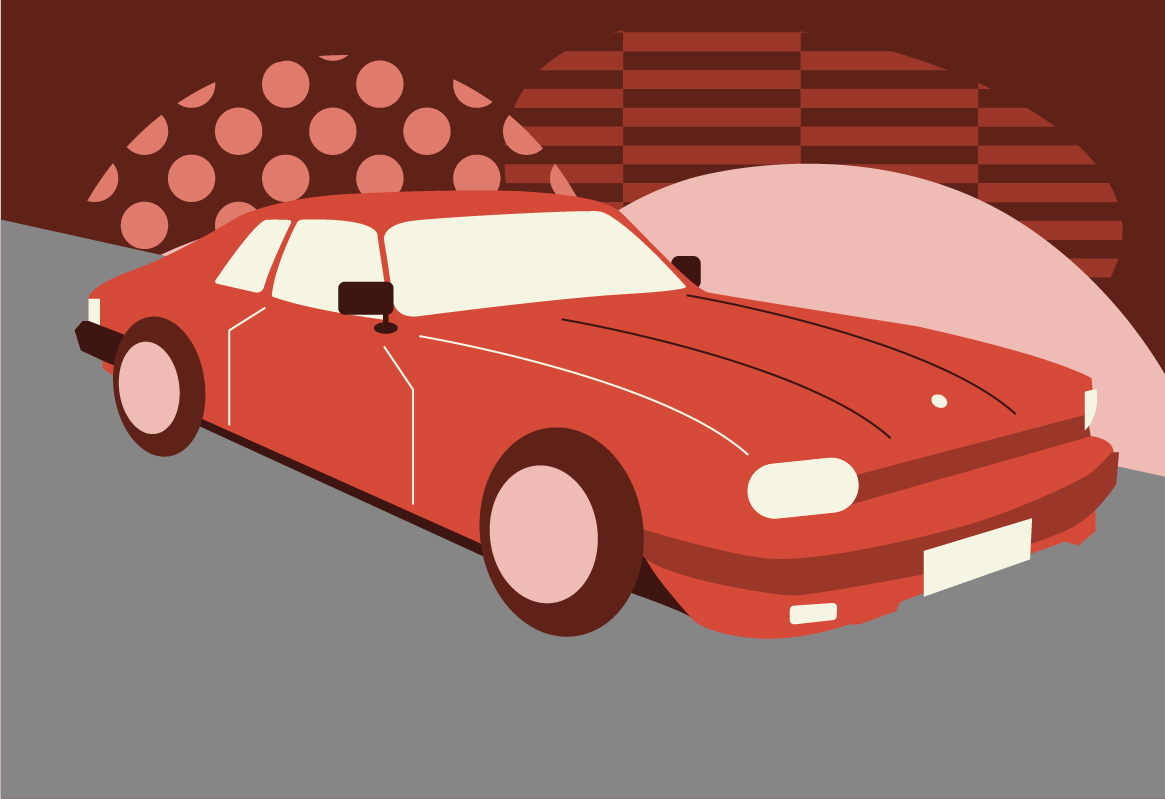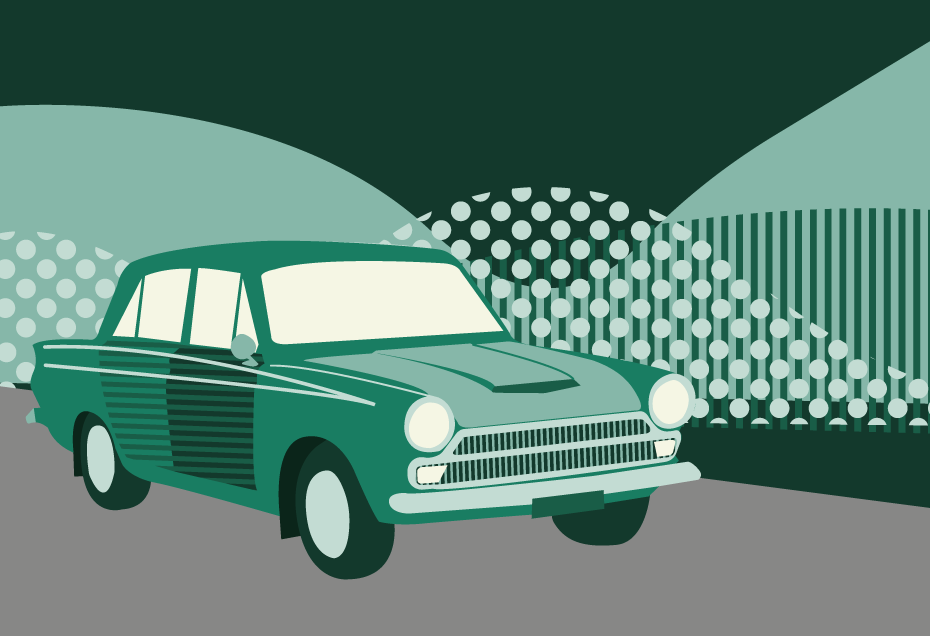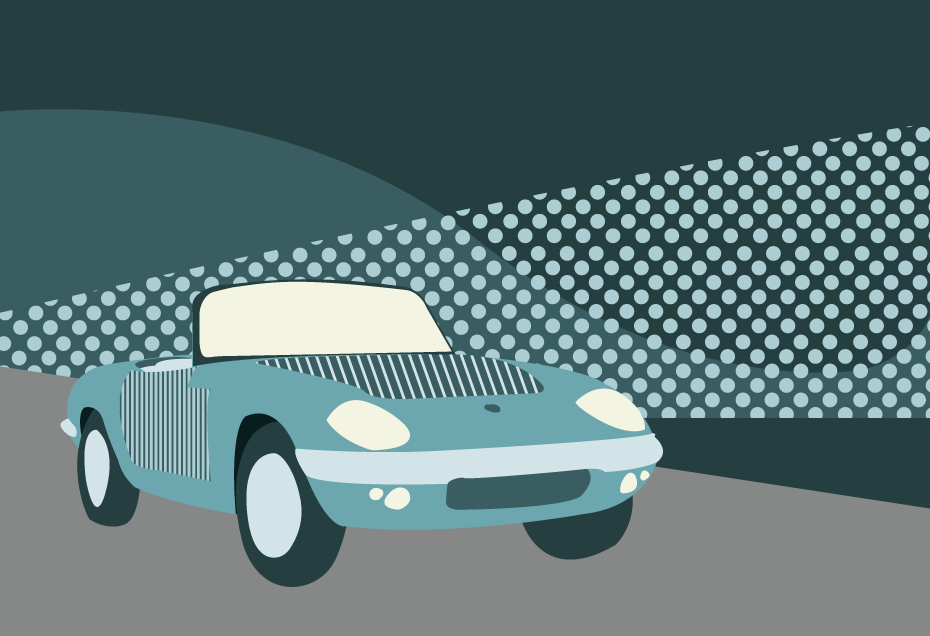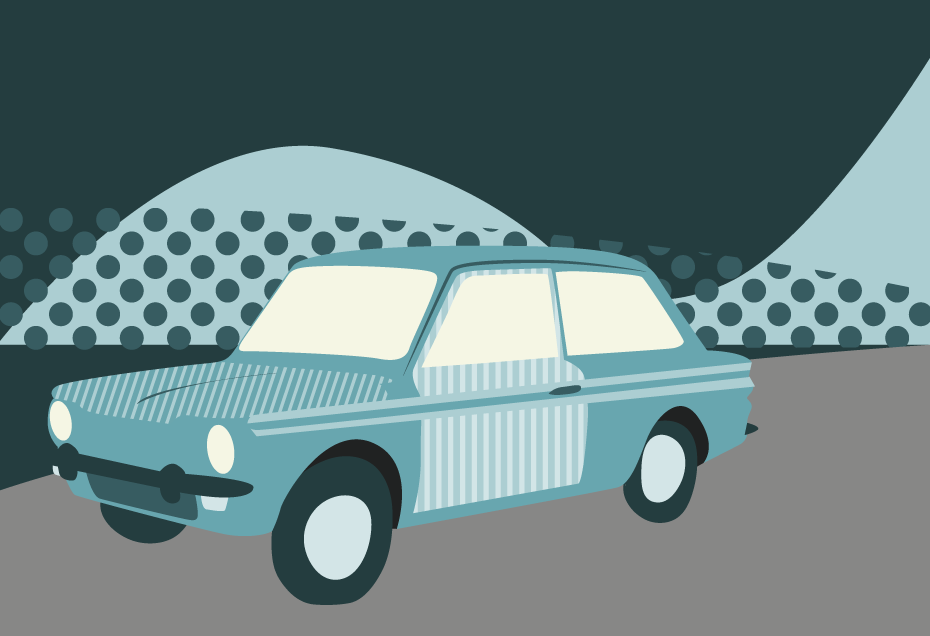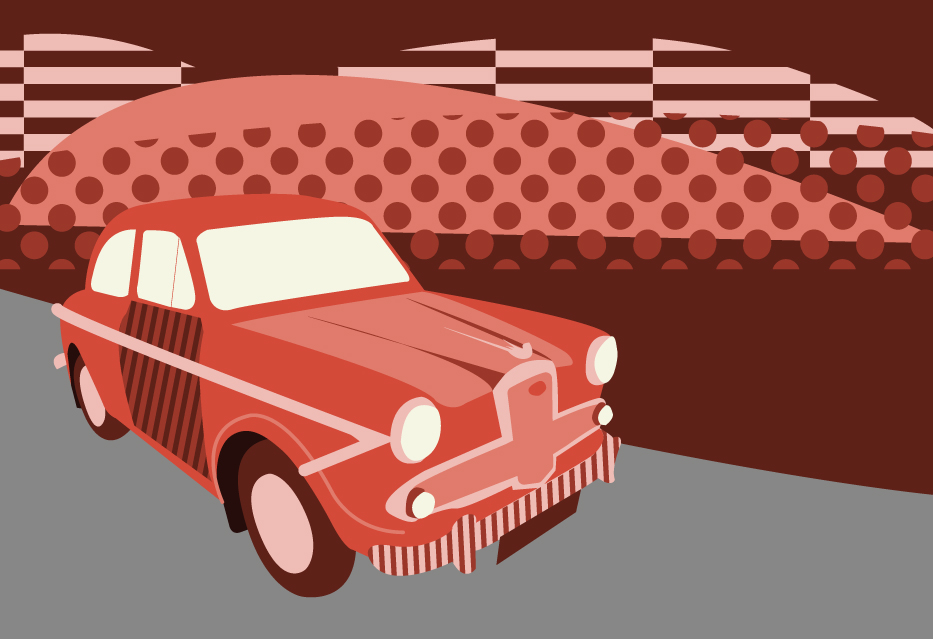As a hard act to follow, it doesn’t get much more difficult than the Jaguar E-Type.
The car given that unenviable task was the XJ-S, and Browns Lane chose a radical departure from the curvy, bulbous styling of the E-Type.
It upset the traditionalists, but the XJ-S ultimately proved a success, remaining in production for 21 years and selling more than its illustrious predecessor.
We chart its history and scour contemporary road test reports.
From the glorious XK120 onwards, Jaguar sports cars had been things of beauty, bold embodiments of the best of British car design culminating in the all-conquering E-Type.
But when it was launched in 1975, seasoned Jaguar aficionados considered the XJ-S an aberration, a sacrilegious departure from the company’s wonderful styling heritage.

Much of the criticism revolved around the rear buttresses and drooping tail lights, plus the large impact-absorbing front bumpers that looked like a styling afterthought.
For many though, that disappointment melted away when they actually drove the car, and gloried in its silken-smooth 5.3-litre V12, admittedly not the most practical of engines with fuel prices soaring at the time.
And the naysayers were further won over when the convertible finally appeared, ridding the XJ-S of those troublesome buttresses and creating an all-together cleaner looking car.
Early development
Aerodynamicist Malcolm Sayer, responsible for the basic shape of the E-Type, was put in charge of its replacement, originally codenamed XJ21.
Based on the same wheelbase as the 2+2 E-Type, but with a slightly wider track, the first prototype emerged in 1966, with revisions to the styling and a convertible version penned the following year.
Further sports car projects were put forward, including a two-seater coupe and four-seater sports sedan, using a variety of engines.
By 1968, Jaguar’s plan appeared to be to put the new, 5.3-litre V12 engine into the E-Type in 1970, with the XJ21 to follow in production a year later.
In the event, the V12 didn’t appear in the E-Type until 1971, and XJ21 was shelved in favour of a new design by Sayers based on the XJ6 saloon platform. The cost of developing an entirely new car was a significant factor.
So XJ21 became XJ27 (coupe) and XJ28 (roadster), both to be powered by the V12 engine, and pitched as a more refined grand tourer at a typically rival-beating price.
Jaguar boss Sir William Lyons worked closely with Sayer on the design, with a focus on aerodynamics that led to those rear buttresses, which improved airflow, added structural strength and stability at high speed.
Tragically, Sayer died at the age of 54 in July, 1970, leaving the final styling of the XJ-S in the hands of Doug Thorpe.
Lyons was also to leave Jaguar before the XJ-S was launched, retiring in 1974.
Goodbye convertible, hello XJ-S
Spooked by fears that the US would ban open-topped cars, plans for the convertible XJ28 were axed, a mistake as no such ban ever materialised.
So the XJ-S was launched in coupe form only in September 1975, powered by the 285bhp, fuel-injected V12 married to either a barely adequate four-speed manual or Borg Warner automatic.
Traditional Jaguar customers were hit with a double whammy: not only had their beloved curves bitten the dust, but the new car was considerably more expensive than the E-Type.
While the last of the E-Types would sell for less than £4,000, the XJ-S cost £8,900 – but it was still cheaper than its main competition from Germany, such as the £11,271 Mercedes 450SLC.
Response to the car’s styling was tepid, to say the least, but in almost every other respect it was greeted enthusiastically by the motoring press of the day.
Here was a car combining Ferrari performance with Rolls-Royce levels of quiet, and tenacious roadholding with a limousine ride.
CAR magazine put the XJ-S up against the aforementioned Mercedes in October 1975, in a report awash with war references to “armaments”, “weapons” and “generals”.
At stake? The honour of being acknowledged builder of the world’s finest luxury production sporting coupe. And national pride.
Like our illustration of the Jaguar XJ-S at the beginning of the article?
Download a free high-quality poster version here.
First impressions
CAR gave the XJ-S’s looks something of a battering – “for the first time, here was a new Jaguar that wasn’t absolutely stunning”.
“It is sleek in parts, and certainly very aggressive,” it wrote. “But it is too messy at the front; the impact-absorbing bumpers work well but look nasty, and where most cars with frontal spoilers now have them integrated into the bodywork, the Jaguar’s is tacked on as if it came from the local speed shop. The tail, with its droopy edges, is just plain ugly.”
OK, but what was it like to drive?
“I got a shock – and oh what a delightful one – the first time I drove the XJ-S,” said the road tester, noting how it surged towards 100mph in short order “with delectable smoothness”, and in near silence.
“It also does it with a feeling of…well, a sort of free spirit. It excites you, just as if you’re riding a very good, very frisky colt. And I for one wasn’t expecting that sort of feeling.
“The thing felt so small and tidy, so much like a tiny little sports car; and it was so easy to place.
It’s good.”
Jaguar had been working on a five-speed gearbox, but it was not considered ready for the XJ-S, and the four-speed unit was unable to fully utilise the torque on offer.
Inside, the Mercedes had a superior finish, with the Jaguar instruments and warning lights “housed in a plastic panel with bright trim on the edges that looks more as if it belongs in a Marina”.
Nevertheless, on sheer value for money, the Brit triumphed, offering “enormous performance for a (relatively) modest price”.
In February the following year, Autocar also waved the Union Flag, denouncing those unpatriotic souls who “follow the fashionable and generally incorrect view that British cars are never as good as foreign ones”.
“The Jaguar XJ-S grand touring car is a reminder that we do still build cars that are world-beaters,” it added. “Naturally, it has failings, though they are mostly small. In many respects it is outstanding. In its combination of performance with docility and refinement, it is unapproached.”
Most praise was reserved for the V12 engine, from which they squeezed 153mph, responding “to one’s wishes wonderfully, with complete obedience, whatever one’s mood”.
It did this to a soundtrack that was “imposing, hard to describe, rising excitingly but not loudly, the voice of great, continuing acceleration kept down, never raucous, even at the top end”.
A true budget supercar?
How would the Big Cat match up against a genuine, exotic supercar, also boasting a V12 engine?
CAR decided to find out in the summer of ‘76, comparing the sub-£10,000 Jag with the £15,964 Lamborghini Espada.
Testers considered the XJ-S design to be “outdated before it was introduced”, and “closer to something of the early ‘60s than the early ‘70s”.
Which is a little curious, because the vastly different E-Type was launched in 1961, and was very much of its time.
The magazine questioned whether the design was capable of lasting into the 1980s. As we know, it did, and well into the ‘90s too.
On the road, the Jaguar had the edge in acceleration up to 60mph and 100mph, and was “staggeringly controllable” for a car of its size and weight.
In the end, it couldn’t match the Italian for roadholding or driving fun, and was more a gloriously smooth, long-distance cruiser – “like a good American supercar” but “better than anything the Americans have ever done, or are probably ever likely to”.
The most obvious drawback to owning an XJ-S in the ‘70s, as fuel prices rocketed, was the appalling fuel consumption, somewhere around 14mpg, as long as there’s no traffic…
Unrest and unreliability
Over in America, a hugely important market for Jaguar, emissions regulations limited to XJ-S to 244bhp, slowing the big car down to a relatively pedestrian 0-60 time of 8.6 seconds.
Reliability issues surfaced with the fuel injection system, which failed to cope with hot weather, while at home, BL was suffering a global market share crisis.
Industrial action in Jaguar’s supply chain hit production, and an ever-changing senior management roster saw the company lacking focus.
Despite starring in TV hit show The Return of the Saint with Ian Ogilvy, the shine of the XJ-S was starting to wear off as sales declined, and the car was in danger of the axe.
Production fell to just 1,057 in 1980 but, despite the many issues behind the scenes, there were improvements to the car, notably revisions to the V12 that boosted output to 300bhp and torque to 318lb ft.
New managing director John Egan worked hard to improve the build quality of the cars, as well as the suppliers’ components, against the backdrop of antiquated production facilities barely updated since the 1950s.
In time-honoured Jaguar tradition, the XJ-S remained the “bargain” of the supercar market, at £19,187, and Motor declared it “among British Leyland’s proudest achievements”.
Adrian Flux Classic Car Insurance
“Driving this latest version has only served to confirm that while it is possible to buy comparable performance for similar money, it is impossible to buy it with greater refinement and comfort at any price,” the magazine wrote in October 1980.
It described the V12 as “the quietest and smoothest production engine ever made”, and the XJ-S as “one of the few cars in which you can listen to the radio at 30mph and 120mph on the same volume setting”.
How would it cope when pitted against a more pure-bred sports car?
Jag v Porsche
In March 1981, CAR matched the XJ-S against the Porsche 928, voted car of the year three years earlier and boasting “beautiful, clean and timeless” lines.
The same could not be said of the Jaguar, a “dog’s breakfast”, the magazine said, and yet also “a highly desirable car, the only coupe with a mass-produced 12cylinder engine”.
The two cars are the last stop before buyers enter the rarified atmosphere of the hand-made Italian supercar, and they clearly have very different characters.
The 928 was once intended as a 911 replacement, but Porsche customers kept faith with the smaller car and sales of the V8 were lower than expected.
Nearly £3,000 more expensive than the XJ-S, the 928 was a fine car with a great engine, but CAR wrote that it did not “prepare you for the silken excellence of the Jaguar’s power delivery”.
“A car developed with such integrity and thoroughness as the Porsche 928 does not deserve to be beaten by a car of the Jaguar’s uneven brilliance,” it said.
“Porsche, lovely car though it is, can be equalled by other cars even in the things it does best.
What you cannot buy – at any price – is a car which achieves the Jaguar’s supreme combinations of performance with silence, roadholding with ride quality.
“There is no car made that can match that. Simply, we’d rather drive a word-beater and live with the looks.”
From July 1981, Jaguar completely reworked the XJ-S’s cylinder head design, thanks to Swiss engineer Michael May’s cylinder head combustion theories.
Out went the original system, which had combustion chambers in the pistons and a flat faced cylinder head, and in came the more conventional ‘Fireball’ head with integrated combustion chambers.
This more free-flowing head made the V12 engine more efficient and, given the High Efficiency (HE) branding, proved a useful marketing ploy to tempt buyers back to the car.
There were also suspension changes, wider wheels and a leather and wood veneer interior, along with a price cut.
Production for 1982 was up to 3,111, and the XJ-S was back in favour.
A new, smaller, engine
Jaguar had long been trying to develop a new, smaller engine, and work on the six-cylinder all-aluminium AJ6 unit had begun back in 1976.
A prototype was ready for 1979, and the XJ-S, which had been used as a test vehicle for evaluation, was chosen for the engine’s debut in 1983.
Road testers more used to the incredibly refined V12 gave the new car mixed reviews, CAR magazine suggesting potential buyers spent the extra £2,500 for the larger engine.
Of course, they weren’t paying the petrol bills, and a 33 per cent improvement in fuel efficiency was not to be sniffed at, and neither was a top speed of 137mph and 0-60 time of 7.2 seconds.
At around the same time, Jaguar finally answered the calls for a convertible, initially available only in AJ6-engined form and with two seats.
Those rear buttresses were gone, along with the thick rear three quarter pillars, and along with them went much of the criticism over the car’s looks.
What Car? tested the 3.6-litre XJ-SC in July 1984, and noted that some drivers would actually prefer the less smooth engine, with its “more gutsy tone and racing-pitch whine”.
The car’s “magic carpet” ride was still in evidence, as well as the “agility and nimbleness of a much smaller car”.
However, the magazine considered it “a rather half-hearted attempt at making it an open-top”, largely because the roll-over bar directly above the driver’s head removed the feel of a true cabriolet.
Nevertheless, it concluded that “anybody with the slightest of patriotic feelings or tiniest hint of nostalgia for the ‘good old days’ of British sports cars will find himself inexorably drawn towards the XJ-SC and its glamorous image”.
Like our illustration of the Jaguar XJ-S at the beginning of the article?
Download a free high-quality poster version here.
Privatisation and the V12 cabrio
Jaguar was on the up, and was back in private ownership in July 1984, a year in which it made more than 6,000 XJ-Ss and a profit of £91.5m.
The following year, it also widened the appeal of the cabriolet, which had not sold well in 3.6-litre form, giving it the V12 engine.
It remained a coupe conversion, rather than a factory-built cabriolet, but Autocar nevertheless said it was “perhaps the ultimate sports car”, albeit one that guzzles fuel at 14mpg.
“In terms of outright performance, there are faster accelerating cars to choose, notably the Porsche 911 Carrera Cabriolet and the Aston Martin Volante Convertible, but where the Jaguar makes its mark is with its unique, and quite exceptional, blend of powertrain plus the inherent benefits offered by a cabriolet,” it wrote.
Sales of the open-top, however, were still disappointing, and Jaguar teamed up with specialists Karmann in 1985 to work on a factory-built convertible.
The new car debuted in 1988, and finally looked like a proper cabriolet, only available in range-topping V12 form, detuned to 291bhp but still plenty fast enough.
Here was an XJ-S that everyone could agree on: it looked good, and by 1989 it accounted for 57 per cent of all XJ-S sales, which were up to a record 11,207.
Throughout this time, Jaguar had been working to improve the 3.6-litre unit, and married it up to the impressive ZF4 HP22 four-speed automatic transmission.
Other changes to the smaller-engined car included firmer springs and dampers, sharper and slightly heavier steering, better and more supportive seats, and wider and lower profile tyres.
According to CAR in February 1988, “now it’s a proper sports car”, turning “the six-cylinder XJ-S from a half-hearted imitation of the proper V12 model, into a completely separate entity, a car of different character”.
While the V12 remained the grand tourer, the 3.6 became the sportier model, with an engine that “now sings just as sweetly in the nose of the XJ-S as the six-cylinder engines do in any BMW”.
The car it was up against in this road test was the Mercedes 300CE, a car launched in 1987 battling the ageing Jag.
But it was the British car that won this duel hands down, and not just because it was £6,600 cheaper at £23,500.
The Jag was quicker to 60mph, more sporty, and more classy, imbuing a feeling of opulence.
“This is one car that can be taken by the scruff of its neck, and made to perform; by the same token, if you are the mood to relax, to daydream a little, then the car will indulge you,” wrote the magazine.
“The Mercedes does neither as well. The fact that the Jaguar is a better driver’s car, a more comfortable car, a faster and a more refined car, are all measures of its marked superiority.”
Ford to the rescue
Problems for Jaguar were mounting, though, in the form of quality issues with the new XJ40 and the rise in the strength of the pound, which made exports to the USA more expensive.
Profits began to plummet and urgently needed cash to finance new models.
General Motors were keen to take a minority stake, but Ford moved quickly to complete a takeover in November 1989.
By then, Jaguarsport, a spin off from the successful Tom Walkinshaw Racing (TWR) Group A saloon programme, had created the big bore 6-litre XJR-S, costing £45,500.
The car’s greatest strength, its engine, had been made greater, the official factory V12 upgraded to pump out 318bhp, with 360lb ft of torque available at 3,750rpm.
Performance would always be hampered by the car’s 4,000lb weight, but it could hit 60mph in a much-improved 6.6 seconds on its way to 161mph, while the new Zytel digital management system improved economy to 19mpg while cruising in the high 80s.
Having shelled out £1.6bn to buy Jaguar, Ford wasted no time in ordering a full model review, and quickly approved the XJ-S facelift penned by Geoff Lawson, head of the styling team.
Launched in May 1991 and now the hyphenless XJS, the car was visually little changed, but the AJ6 straight-six engine was upgraded to 4-litres, available with either a five-speed manual box or the new ZF 4HP 24E automatic transmission.
The V12 continued, upgraded to 6-litres in 1992. This was a slightly different engine to the Jaguarsport model that had been on the market since 1988.
The six-cylinder cars were finally offered to the American market, and quickly began to outsell the V12s.
Convertibles were available with both engines, and a 2+2 soft-top was added for the first time, while the car received more aerodynamic front and rear bumpers.
Nearing the end
The proposed replacement for the XJS, the F-Type, was cancelled. We’d have to wait a long time for the F-Type…
So the old car had to soldier on while work started on a different successor, project X100, which would become the XK8 and XKR.
Meanwhile, in 1994 the XJ6 appeared in X300 form, using a revised AJ6 4-litre engine called the AJ16, which quickly found its way into the XJS.

With demand for the V12 disappearing in the USA, the big-engined car became available only on special order, one of which was to become the last XJS of all – a blue 6-litre coupe rolling off the Brown’s Lane production line in April 1996.
It may not have replaced the E-Type on a like-for-like basis, but it had outlasted it by 21 years to 14, and comfortably outsold it by 115,413 to 72,584.
And it may not have its predecessor’s gorgeous body, but it more than makes up for it in mile-eating refinement.
What’s more, while E-Type prices have soared well beyond the means of most of us, you can buy a very good XJ-S for well under £20,000, as long as you can afford to run it.
Disparaged for its looks during its lifetime, it has aged well, and is one of those most rare of beasts – a genuinely great British Leyland car.


